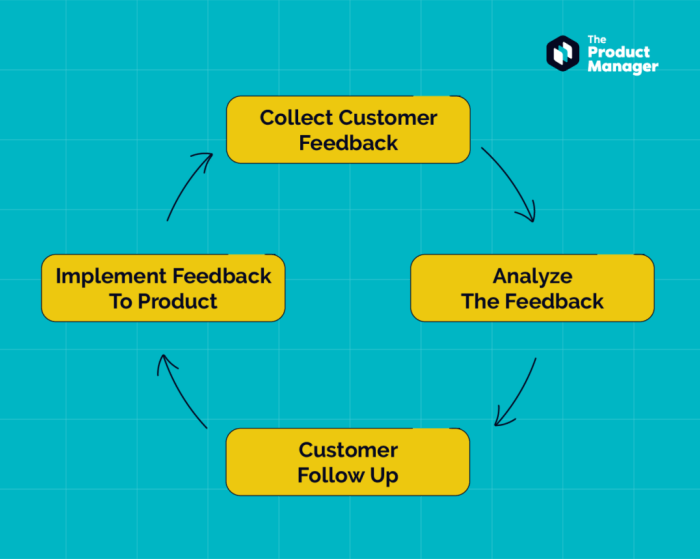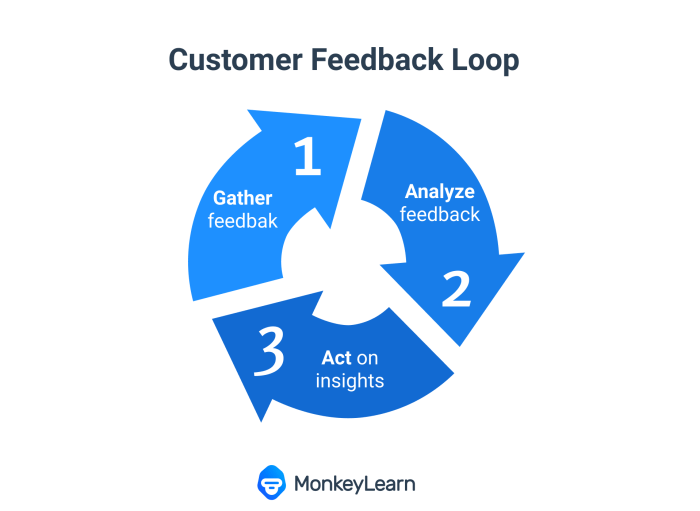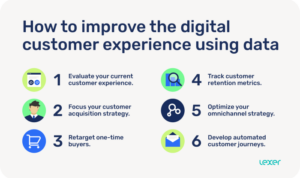Building a Customer Feedback Loop sets the stage for businesses to thrive by actively engaging with their customers and incorporating valuable insights for continuous improvement. From understanding the importance to implementing effective strategies, this comprehensive guide delves into the core components of creating a successful feedback loop.
Importance of Building a Customer Feedback Loop

Building a customer feedback loop is essential for businesses as it provides valuable insights into customer preferences, satisfaction levels, and areas for improvement. By actively seeking and implementing customer feedback, companies can enhance their products or services, increase customer loyalty, and ultimately drive business growth.
Examples of Customer Feedback Loop Impact
- Apple: Apple regularly gathers feedback from its customers through surveys and product reviews. This feedback has helped Apple identify issues with their products, leading to improvements in subsequent versions.
- Amazon: Amazon utilizes customer feedback to enhance its website functionality and user experience. By listening to customer suggestions, Amazon has been able to optimize its platform for better navigation and shopping experience.
- Netflix: Netflix analyzes customer feedback to recommend personalized content to its users. By understanding user preferences and viewing habits, Netflix can suggest movies and TV shows that align with individual tastes.
Impact of Ignoring Customer Feedback
Ignoring customer feedback can have detrimental effects on a business, including:
- Loss of Customer Trust: When businesses disregard customer feedback, it can lead to a lack of trust and credibility among customers. Ignoring their opinions may cause customers to seek alternatives that value their input.
- Missed Opportunities for Improvement: Customer feedback often highlights areas where businesses can enhance their products or services. By ignoring this feedback, companies miss out on opportunities to innovate and stay competitive in the market.
- Decreased Customer Satisfaction: Failing to address customer feedback can result in decreased customer satisfaction levels. Unresolved issues or unmet expectations can lead to customer churn and negative word-of-mouth, impacting the overall reputation of the business.
Components of a Customer Feedback Loop
Customer feedback loops consist of several essential components that work together to gather, analyze, and act upon feedback from customers. These components are crucial for businesses to improve their products, services, and overall customer experience.
Data Collection
- Utilizing surveys, feedback forms, and social media monitoring to gather feedback from customers.
- Implementing Net Promoter Score (NPS) surveys to measure customer loyalty and satisfaction.
- Tracking customer interactions and behavior to understand their preferences and pain points.
Feedback Analysis
- Using data analytics tools to analyze feedback and identify trends or patterns.
- Segmenting feedback based on different criteria such as demographics, purchase history, or feedback sentiment.
- Identifying key insights and actionable recommendations from the analyzed feedback data.
Action Planning
- Developing strategies and initiatives based on the feedback insights to address customer needs and concerns.
- Implementing changes or improvements to products, services, or processes based on customer feedback.
- Monitoring the impact of implemented changes and continuously iterating the feedback loop for ongoing improvement.
Strategies for Collecting Customer Feedback: Building A Customer Feedback Loop

Customer feedback is essential for businesses to understand their customers’ needs and improve their products or services. Here are some effective strategies for collecting customer feedback:
Surveys
Surveys are a common and versatile method for collecting feedback. They can be distributed online, through email, or even in-person. Surveys allow businesses to ask specific questions and gather quantitative data to analyze trends and patterns.
Interviews
Conducting interviews with customers can provide valuable qualitative insights. By having one-on-one conversations, businesses can delve deeper into the reasons behind customers’ feedback and understand their experiences on a more personal level.
Social Media Monitoring
Monitoring social media platforms is a great way to gather real-time feedback from customers. By keeping an eye on comments, mentions, and reviews, businesses can quickly respond to feedback and engage with customers directly.
Setting Clear Objectives, Building a Customer Feedback Loop
Before collecting feedback, it’s important to define clear objectives. Whether it’s improving a specific product feature or enhancing customer service, having a goal in mind will help businesses tailor their feedback collection methods accordingly.
Encouraging Customer Participation
To encourage customers to provide feedback, businesses can offer incentives such as discounts, exclusive offers, or entry into a prize draw. Creating user-friendly feedback forms and actively seeking input through various channels can also boost customer participation.
Analyzing and Utilizing Customer Feedback
After collecting customer feedback, the next crucial step is to analyze the data to extract valuable insights that can drive business decisions and improvements.
Process of Analyzing Customer Feedback Data
Analyzing customer feedback data involves organizing and categorizing the feedback received from customers. Businesses can use various tools and techniques to sort through the data and identify recurring themes or patterns.
- Utilize sentiment analysis to gauge the overall sentiment of the feedback, whether positive, negative, or neutral.
- Create visual representations such as word clouds or graphs to highlight common s or topics mentioned in the feedback.
- Look for trends over time to see if there are any changes in customer perceptions or satisfaction levels.
Using Feedback to Make Informed Decisions
Businesses can leverage customer feedback to make informed decisions by:
- Identifying areas for improvement based on recurring issues or suggestions from customers.
- Developing new products or services that align with customer preferences and needs.
- Adjusting marketing strategies based on feedback regarding customer perceptions and preferences.
Examples of Successful Utilization of Customer Feedback
Several companies have successfully utilized customer feedback to drive business growth:
- Amazon: Amazon continuously gathers customer feedback to improve its website functionality, product offerings, and customer service, leading to increased customer satisfaction and loyalty.
- Apple: Apple incorporates customer feedback into its product development process, resulting in innovative and customer-centric products that resonate with their target market.
- Netflix: Netflix uses customer feedback to personalize recommendations, enhance user experience, and create original content that caters to the preferences of its subscribers.





